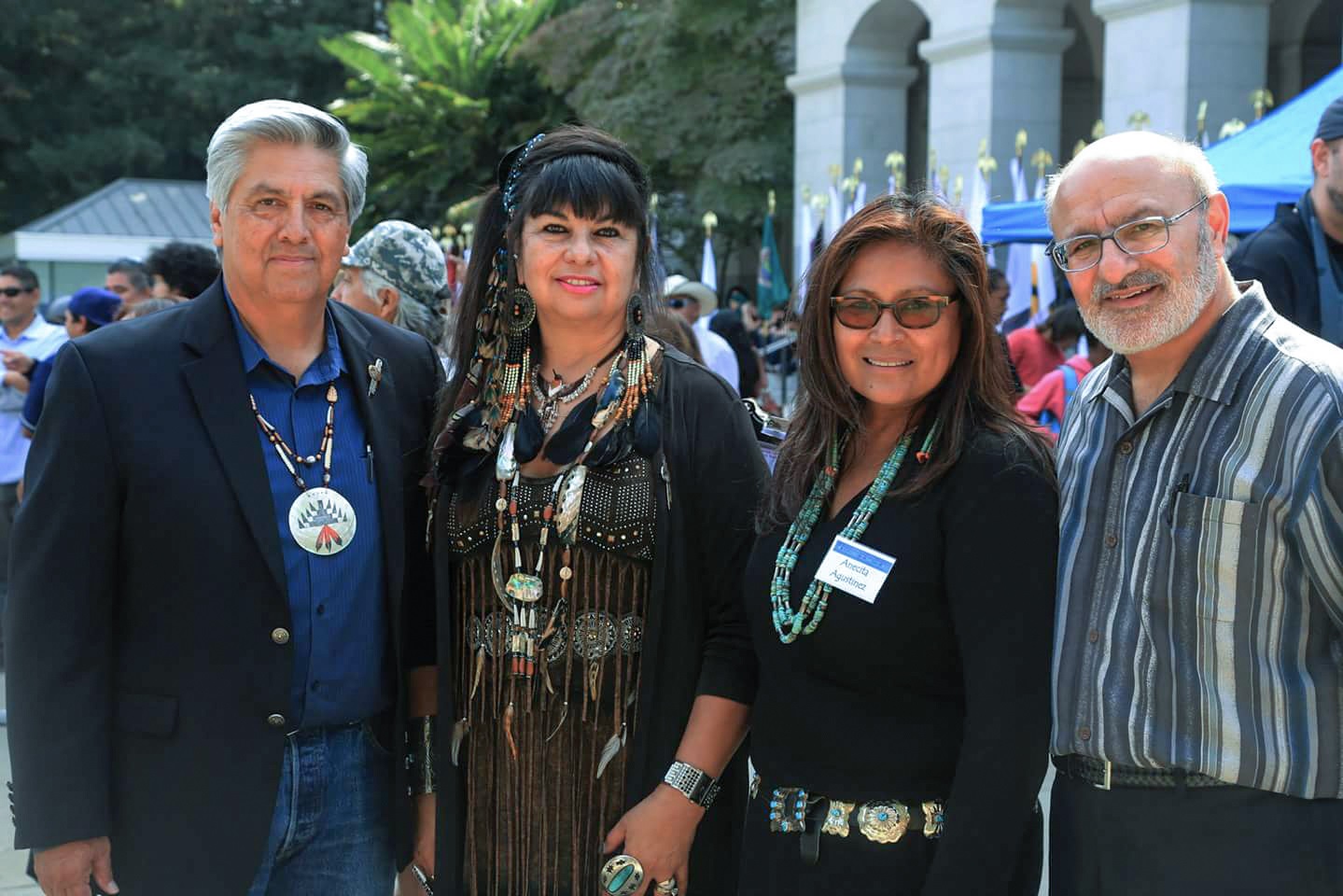Working Together: DWR Connects with California Tribes
Tuolumne Band of Me-Wuk Indians Council Member Dennis Hendrick, San Manuel Band of Mission Indians Chairwoman Lynn Valbuena, DWR Tribal Policy Advisor Anecita Agustinez, and DWR Chief of Statewide Integrated Regional Water Management Kamyar Guivetchi share a moment at California Native American Day September 2017.
California’s Native American Tribes and DWR share a common goal: protecting one of the state’s most sacred resources – water. Until 2014, California Tribes did not have a formal role in the environmental review process for State infrastructure projects.
Assembly Bill 52, Native Americans: California Environmental Quality Act (AB 52) enacted in 2014, addresses the need for formal consultation with California Tribes, and recognizes that impacts on tribal cultural resources can equate to significant environmental impacts.
“AB 52 recognizes tribal cultural resources as more than just artifacts, and gives tribal ecological knowledge a formal role in environmental assessment,” said DWR Policy Advisor Anecita Agustinez. “It embraces that California’s landscapes do have a cultural value and must not only be respected, but protected.”
Strengthening the Department’s relationships with California’s Native American Tribes is a top priority of DWR’s Office of Tribal Policy team, Agustinez added.
The Department has adopted a Tribal Engagement Policy to strengthen DWR’s commitment to improving communication, collaboration, and consultation with California Tribes consistent with the Tribal Consultation Policy directives in Executive Order B-10-11 and the California Natural Resources Agency Tribal Consultation Policy.
California Natural Resources Agency echoed the effort with a consultation policy that sought to build on existing relationships and encourage more outreach and collaboration with tribal governments and communities.
From the onset of AB 52, DWR has taken a proactive approach to engaging and collaborating with California tribes, as well as educating employees on the law and its requirements.
“Relationships with California’s tribal communities have become stronger since increasing outreach to tribes and furthering awareness throughout DWR,” said DWR Tribal Liaison Emily Alejandrino.
“Staff continually show an interest in California tribal communities and are always striving to do more to connect,” Alejandrino said. “The Department will continue to seek out the meaningful input of California tribes in the development of policies, programs, and projects. The new provisions of AB 52 will ensure that California Tribes have more opportunities to participate and engage with us regarding activities that may impact tribal communities.”
The Department has taken many measures to improve tribal collaboration and engagement for effective consultation, including:
• Forming workgroups to implement AB 52
• Establishing new lines of communication with tribal governments and communities
• Developing guidance documents for engagement
• Identifying a next step to establish DWR policy to formalize the law and ensure AB 52 requirements are met
“Inclusion of tribal communities throughout the decision-making process will promote positive and achievable solutions built upon our shared history, knowledge, and cultures,” added Agustinez.
